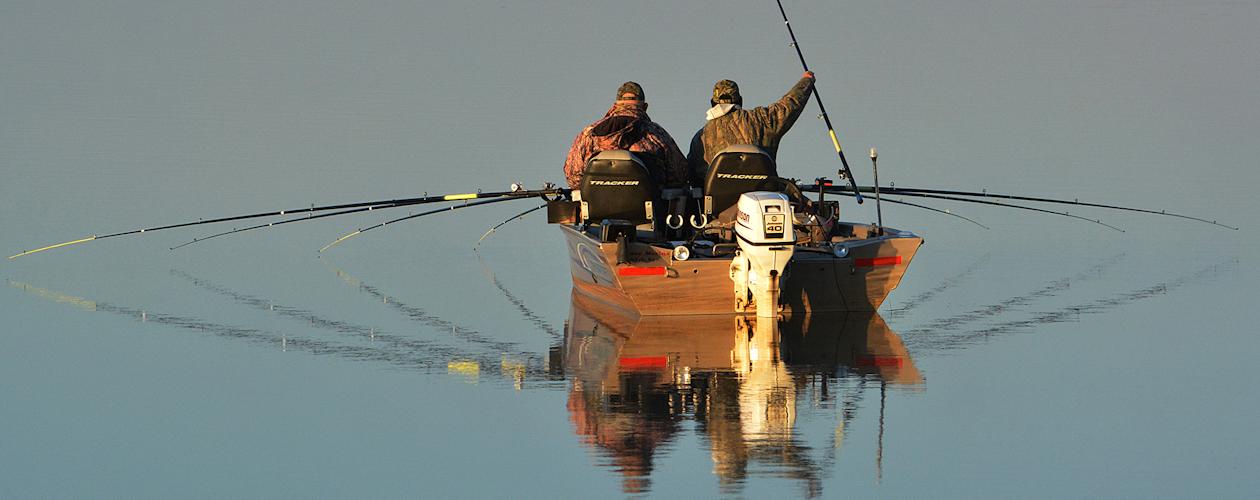Late Spring Bite Good for Catfishermen; Mayfly Hatches Near
Written by Steve McCadams - Published on June 8, 2022
The late spring bite for catfish is alive and well along Kentucky Lake. Summer hasn’t officially arrived but the fish are already in a summer pattern and beginning to school along the main Tennessee River channel when a little current is present.
Some dandy stringers have been taken this week as anglers search for the fish along the main river channel ledge while bumping bottom or sometimes fishing for suspended fish. Bait of choice has been nightcrawlers but a few anglers are experimenting while using leeches, shrimp, chicken livers and assorted concoctions of commercial stink baits.
The bite should hold up throughout the summer so anglers have some good times ahead.
Meanwhile, lake levels continue to stay put and dance around the summer pool elevation of 359. There has been enough rainfall and runoff to keep plenty of current moving out there, which benefits catfishermen, bass anglers and even some crappie anglers at times.
The moving water seems to stimulate baitfish activity. When schools of shad are moving about and feeding on zooplankton it has a rippling effect throughout the food chain. The more the shad move the more activity from the various species who seek their whereabouts.
Surface temperatures this week have climbed slightly as some warm days have been part of the fishing scene. Morning temps are starting out around the 77 degree range but warming to 81 degree by midday. Water color is clear across most of the reservoir with slight stain up Big Sandy and at various areas along the Tennessee River.
Still enjoying activity have been bluegill anglers who have been the beneficiaries late spawning phases. It appears some nice bull bream have backed off the banks lately and chosen to protect some deeper water bedding zones.
Depths of 5 to 8 feet are holding some nice ones. Anglers are often casting artificial grubs and crickets on light tackle without using a bobber. Crawling the bait slowly over deeper bluegill beds is deadly as the really tag it and deliver a nice battle.
Some opt to use casting bobbers and just adjust the bobber stops to deeper depths and this works too. In addition to bluegill a few shellcracker have also moved out to deeper spots, although some shoreline weedbeds will still give up some fish in the weeks ahead.
Watch for some big mayfly hatches to occur in the next week or two along the shorelines of Kentucky Lake. That’s another great opportunity to catch bluegill and some bass while casting light tackle beneath the feeding frenzies of a mayfly hatch.
Bass fishermen continue to back off the banks and target ledge fishing as surface temps heat up. Although not all are hitting deeper areas most boats by midmorning are tossing big crankbaits, Texas rigged worms, hopping a jig and craw combos or casting a Carolina rigged worm or lizards.
A few larger fish have been taken by those working main lake ledges of most reports indicate locating a school of larger fish has been difficult. Out on the drops it has been a one-here, one-there scenario.
A little current has been present lately and that usually works in favor of the ledge bite for hot weather bass fishing.
There are still a few fish relating to shallow grassbeds, deeper buck bushes and blowdowns. The shallow bite is always in the equation, especially if schools of pin minnows can be located holding on structure.
Right now there are abundant schools of pin minnows roaming the shallow areas, which indicates a pretty good hatch from shad or similar forage such a tiny silverside minnows. Each week the minnows get bigger and become more appealing to some larger bass too.
Working a spinnerbait or Texas rigged worm or craw around the shallow structure will produce as will a topwater presentation offered in the early morning and late afternoon hours. And, watch for bass to move up and partake of the mayfly buffets once files start hatching.
All sorts of small fish feed off the mayflies and bass know it and follow their forage.
The crappie bite has been fair with a few fish taken in midrange depths of 11 to 14 feet by boaters trolling crankbaits out over main lake ledges. That pattern allows the angler to cover a lot of water and when crappie and scattered and suspended the technique works quite well.
Some fish have been taken by fishermen vertical fishing jigs and live minnows around submerged stakebeds and brushpiles. Locating structure out in the main lake’s midrange depth zones usually works well throughout June and early July.
Crappie usually relate to main lake drop-offs and hang around the midrange depth range as schools of shad are abundant there and the fish have pulled out of shallow areas but not yet transitioned to the deeper depths of their summer hideouts just yet.
Best to rise and shine early once the hot weather enters the picture. Seems the bite is best in lowlight conditions and unless cloud cover is present that means hitting the lake early or perhaps in the late afternoon.
Once that sun rises high the fish are somewhat light sensitive and curtail their feeding sprees until lowlight returns.
< Return to the Archives
< Return to Fishing Reports
< Return to Fishing Overview








